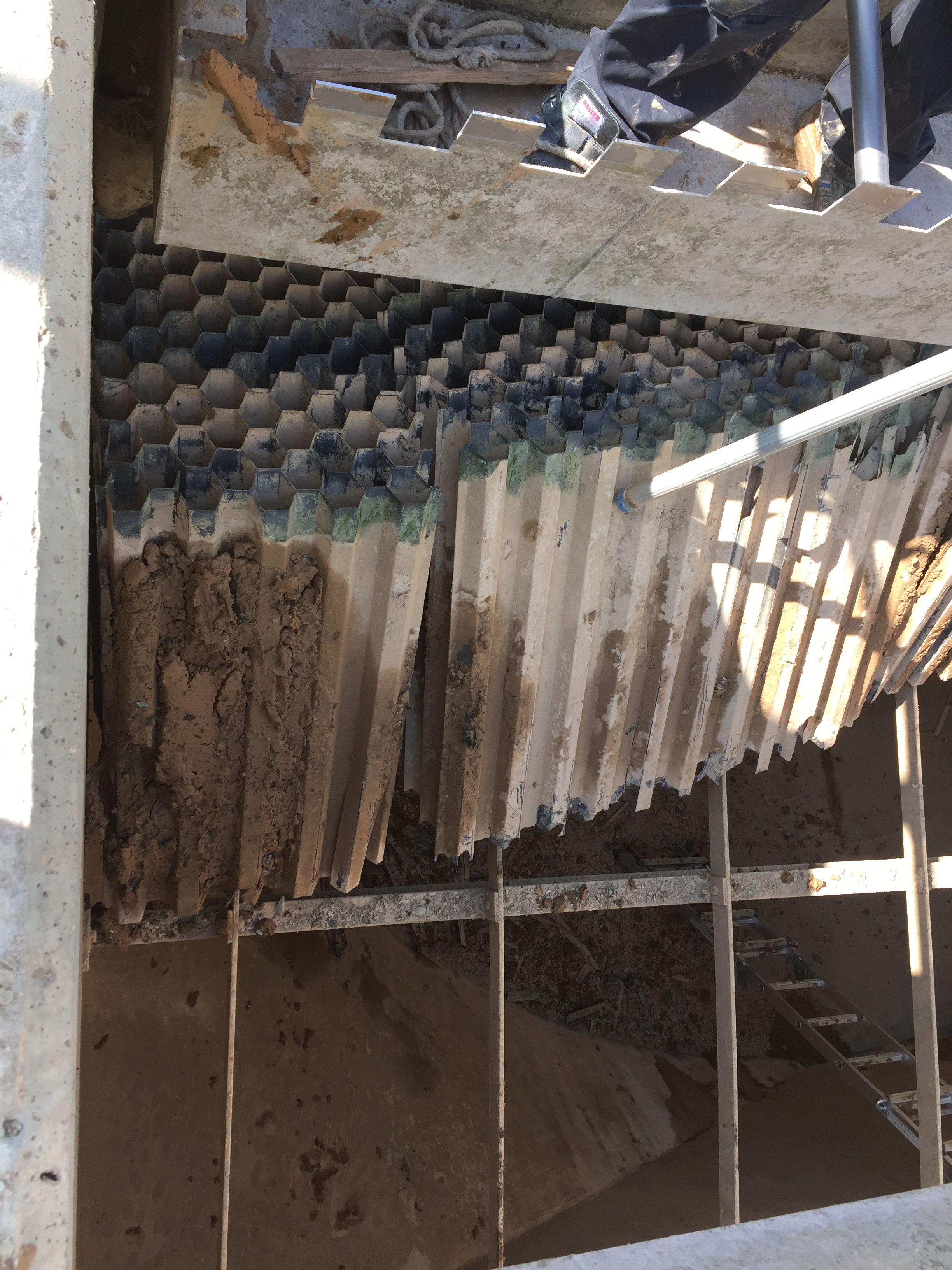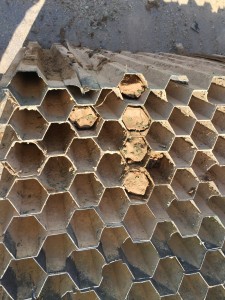
What kind of lamella do I have to use in a tertiary or a DWTP?
posted in Technical Articles by TecnoConverting
In several projects we detect that the lamellar projected for tertiary treatment or Drinking Water Plants have a small opening, commonly a model ranging from 40 mm to 60 mm opening.
When we ask about the reason why a project a treatment with this opening the answer is always more or less the same: because is a tertiary or a DWTP.
With this answer we could understand that the presence of solid is less, or small, so it is best to incorporate a lamellar with strait opening, which has greater projected surface and thus greater amount of solids are decanted
 But from TecnoConverting Engineering we think that this is a mistake. From our experience, we have seen in several tertiary or ETAP’s the amount of suspended solids is high, so the lamellar that have been projected are clogged soon. This causes the decrease of performance and efficiency of the system and maintenance thereof is complicated greatly. As always indicated, the major problem of such complications is the load that the first lamellar modules receive, and then the support structure, causing that modules crush among themselves or in the worst case, the support structure may collapse.
But from TecnoConverting Engineering we think that this is a mistake. From our experience, we have seen in several tertiary or ETAP’s the amount of suspended solids is high, so the lamellar that have been projected are clogged soon. This causes the decrease of performance and efficiency of the system and maintenance thereof is complicated greatly. As always indicated, the major problem of such complications is the load that the first lamellar modules receive, and then the support structure, causing that modules crush among themselves or in the worst case, the support structure may collapse.
It is very important in any sizing to be aware of the amount of suspended solids, and from this data, design the lamellar required for the installation to work as efficiently as possible.
On the pictures you can appreciate sludge accumulated in a tertiary lamellar settler. As you can see, the amount of sludge accumulated inside the modulles is considerable.
